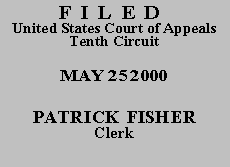

| LOWELL E. HANCE,
Petitioner-Appellant, v. COMMISSIONER OF INTERNAL REVENUE, Respondent-Appellee. |
|
Petitioner Lowell E. Hance filed a Tax Court petition seeking a redetermination of alleged income tax deficiencies for the years 1985, 1986, 1987, and 1988. The Commissioner of Internal Revenue moved to dismiss for lack of jurisdiction on the grounds that Mr. Hance had not been issued valid notices of deficiency for any of the years in question. The Tax Court granted the Commissioner's motion to dismiss and summarily denied Mr. Hance's post-judgment motion to vacate. Mr. Hance seeks review of both decisions.
As a threshold matter, we must determine if we have jurisdiction to consider Mr. Hance's request for review. Initially, this court questioned its jurisdiction in this case based on a perception that Mr. Hance's Tax Court motion to vacate was not timely filed. In his jurisdictional memorandum brief, the Commissioner explained that, pursuant to Tax Court Rule 162, the Tax Court granted Mr. Hance leave to file his motion to vacate out of time.(1) Therefore, the ninety-day period for filing his notice of appeal did not begin to run until the Tax Court denied Mr. Hance's motion to vacate on January 29, 1999, see Fed. R. App. P. 13(a)(2), his notice of appeal, filed on April 28, 1999, was timely filed, and we have jurisdiction to consider the appeal.
In reviewing Tax Court decisions, we review purely factual issues under a clearly erroneous standard, and purely legal questions de novo. See NCAA v. Commissioner of Internal Revenue, 914 F.2d 1417, 1420 (10th Cir. 1990). We have jurisdiction to consider Mr. Hance's appeal pursuant to 26 U.S.C. § 7482(a), and we affirm.
When the Internal Revenue Service (IRS) determines that a taxpayer owes additional taxes, it is authorized to send a notice of deficiency to the taxpayer. See 26 U.S.C. § 6212(a); Guthrie v. Sawyer, 970 F.2d 733, 735 (10th Cir. 1992). The issuance of a notice of deficiency is a prerequisite to any action by the IRS to "assess, collect, or reduce to judgment most income tax liabilities." United States v. Zolla, 724 F.2d 808, 810 (9th Cir. 1984). Therefore, "[t]he notice of deficiency is . . . the 'ticket' to the Tax Court," Guthrie, 970 F.2d at 735, and the Tax Court's jurisdiction is dependant "'upon the issuance by the Commissioner of a notice of deficiency,'" Estate of Davenport v. Commissioner of Internal Revenue, 184 F.3d 1176, 1182 n.2 (10th Cir. 1999) (quoting Tax Ct. R. 13(a)). See also 26 U.S.C. § 6214.
On appeal, Mr. Hance maintains the same argument he asserted in his opposition to the Commissioner's motion to dismiss and his motion to vacate--that certain reports titled "Income Tax Examination Changes" sent to him by the IRS were the equivalent of the required notices of deficiency. Although "[n]o particular form is required for a statutory notice of deficiency[,] . . . it must set forth the amount of the deficiency and the tax year involved." Alford v. Commissioner of Internal Revenue, 800 F.2d 987, 988 (10th Cir. 1986). Here, the reports relied on by Mr. Hance not only lacked the required deficiency amount, they indicated a reduction in his tax liability. As asserted by the Commissioner, the reports were generated to advise Mr. Hance of proposed decreases in taxes and penalties for the years 1985, 1986, 1987, and 1988. In granting the Commissioner's motion to dismiss, the Tax Court found that the examination change reports did not inform Mr. Hance of any tax deficiency for the years in question and "were clearly not intended to be a notice of deficiency." Appellee's Br., Addendum at 17. We agree.
Because issuance of a valid notice of deficiency is a prerequisite to the jurisdiction of the Tax Court, see Estate of Davenport, 184 F.3d at 1182 n.2, and because Mr. Hance has not been issued valid notices of deficiency for the years in question, the Tax Court's grant of the Commissioner's motion to dismiss was appropriate.(2) Therefore, the petition for review is GRANTED and the judgments of the United States Tax Court dismissing Mr. Hance's action for lack of jurisdiction and denying his motion to vacate are AFFIRMED.
Entered for the Court
Circuit Judge
*. This order and judgment is not binding precedent, except under the doctrines of law of the case, res judicata, and collateral estoppel. The court generally disfavors the citation of orders and judgments; nevertheless, an order and judgment may be cited under the terms and conditions of 10th Cir. R. 36.3.
1. Tax Court Rule 162 provides: "Any motion to vacate or revise a decision, with or without a new or further trial, shall be filed within 30 days after the decision has been entered, unless the Court shall otherwise permit."
2. We hold the Commissioner to his judicial declaration that a thorough search of IRS files did not produce any evidence that a notice of deficiency for the years in question had been issued to Mr. Hance. Therefore, the matter of a deficiency assessment against Mr. Hance for the years in question is not yet at issue and, in the event he is issued a notice of deficiency for the years 1985, 1986, 1987, and 1988, at any time in the future, he can timely file for review or
reconsideration in the Tax Court.